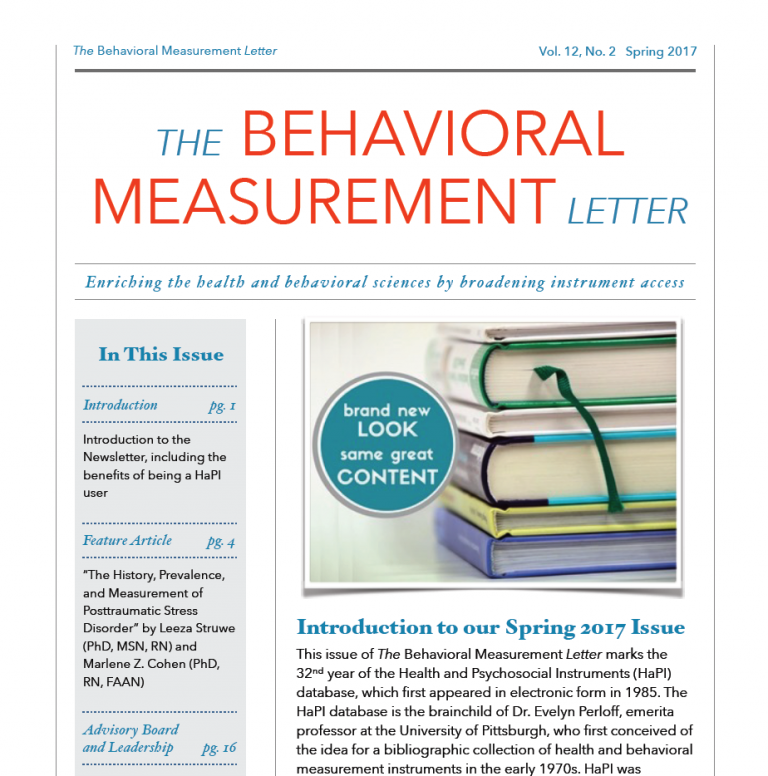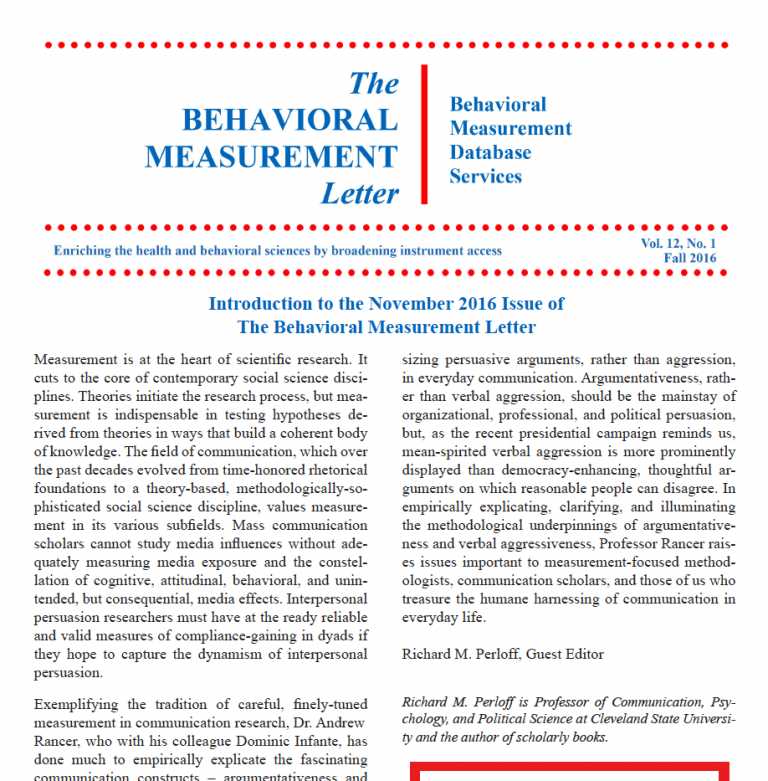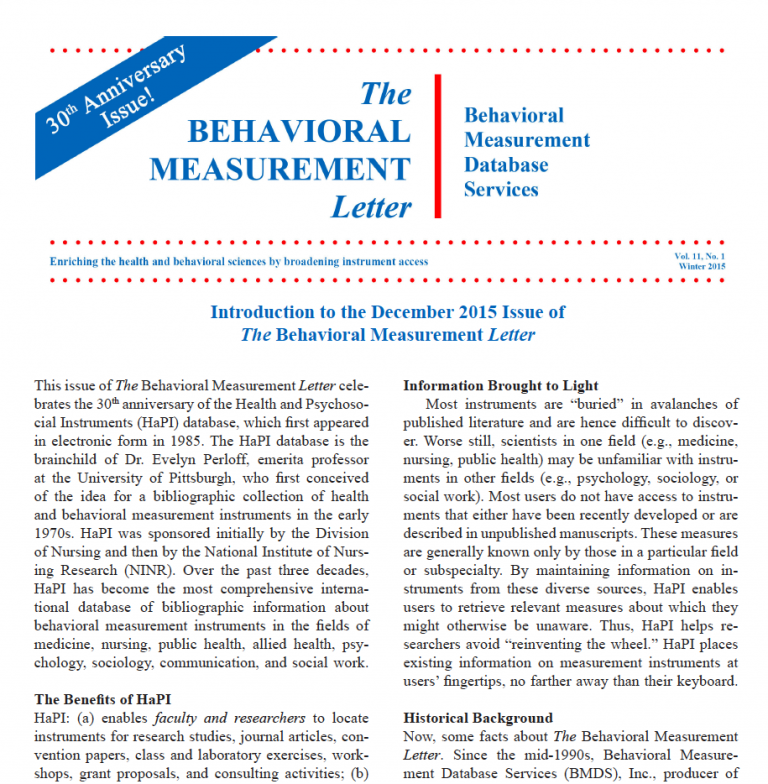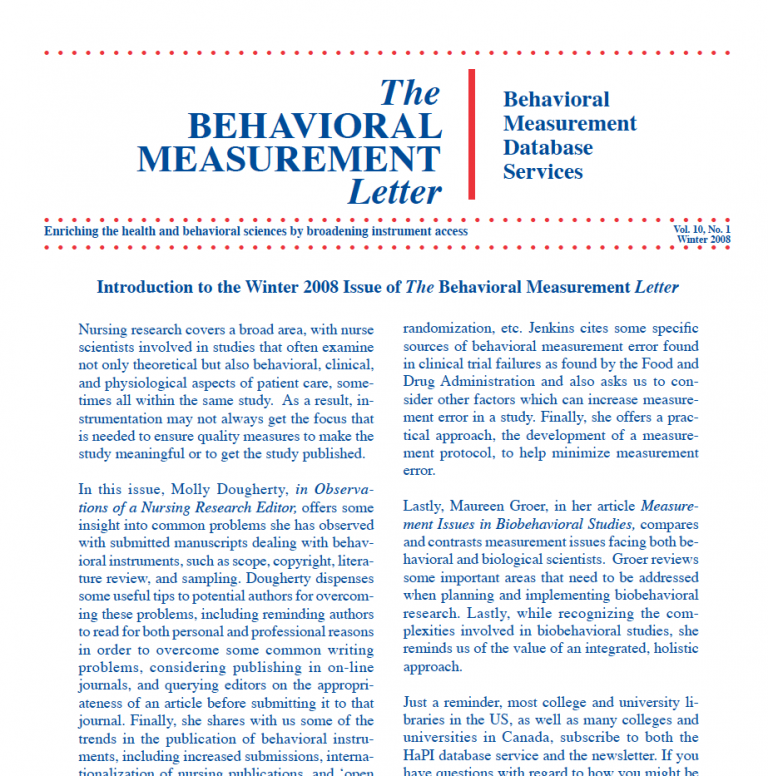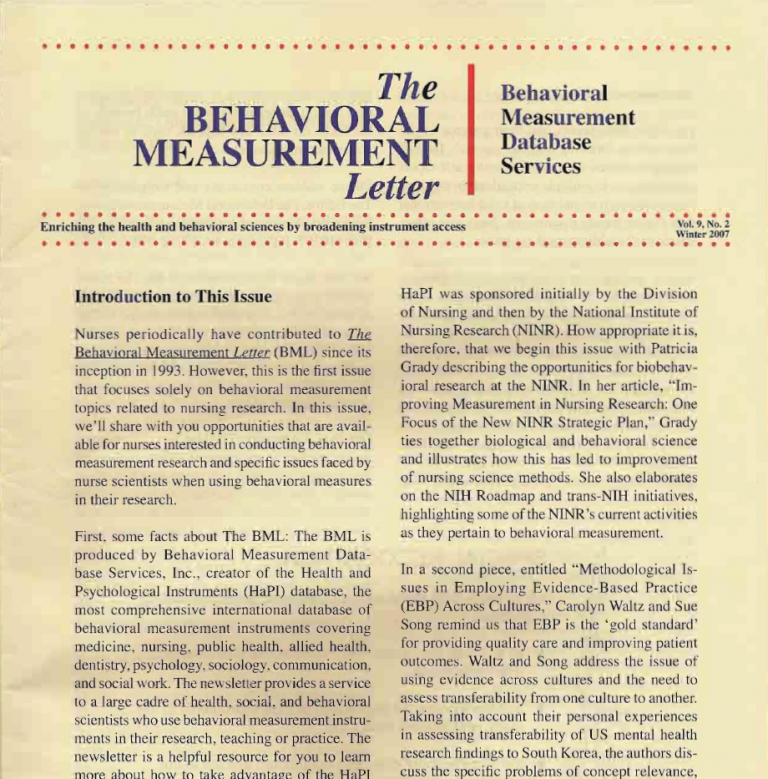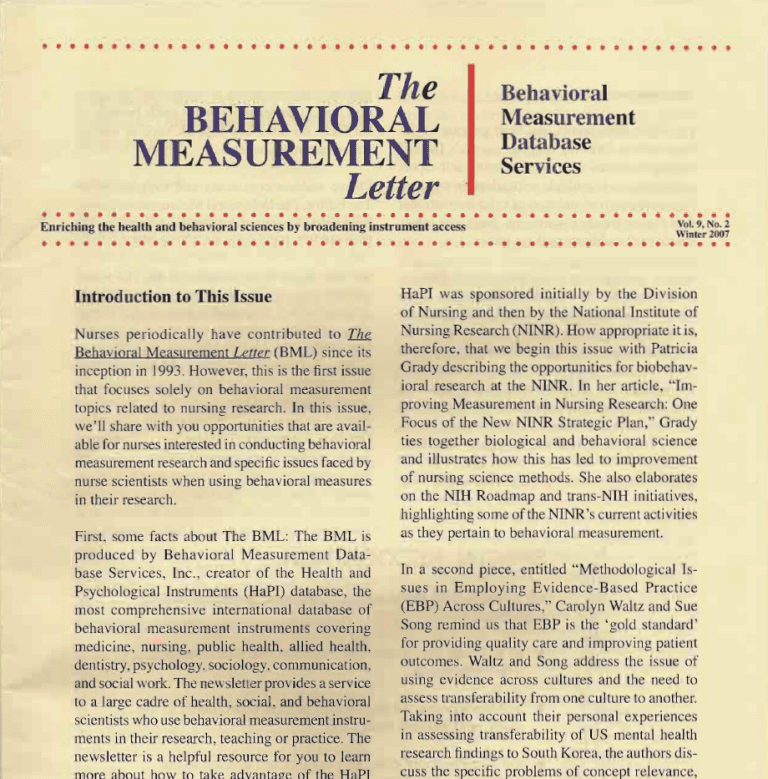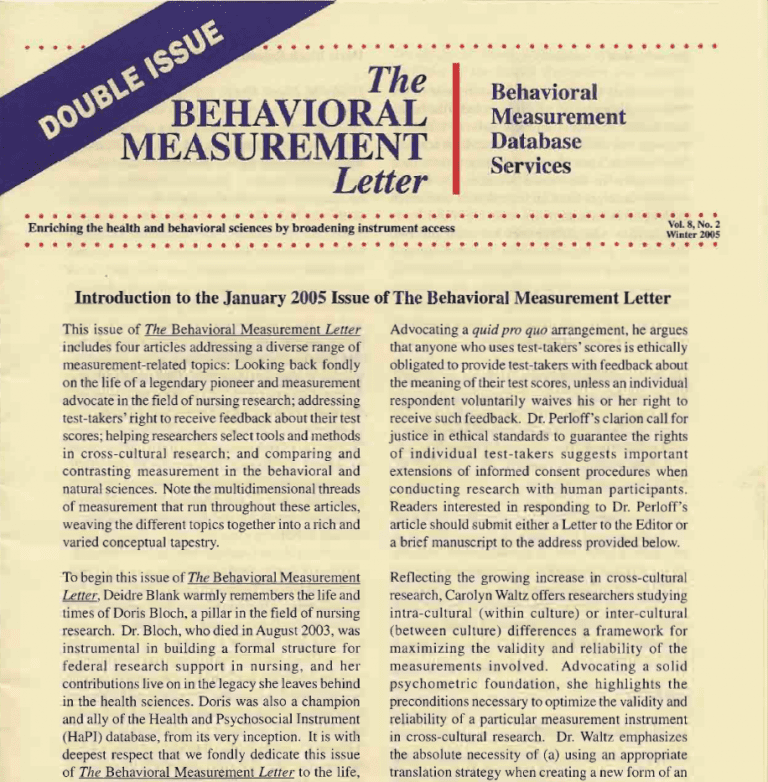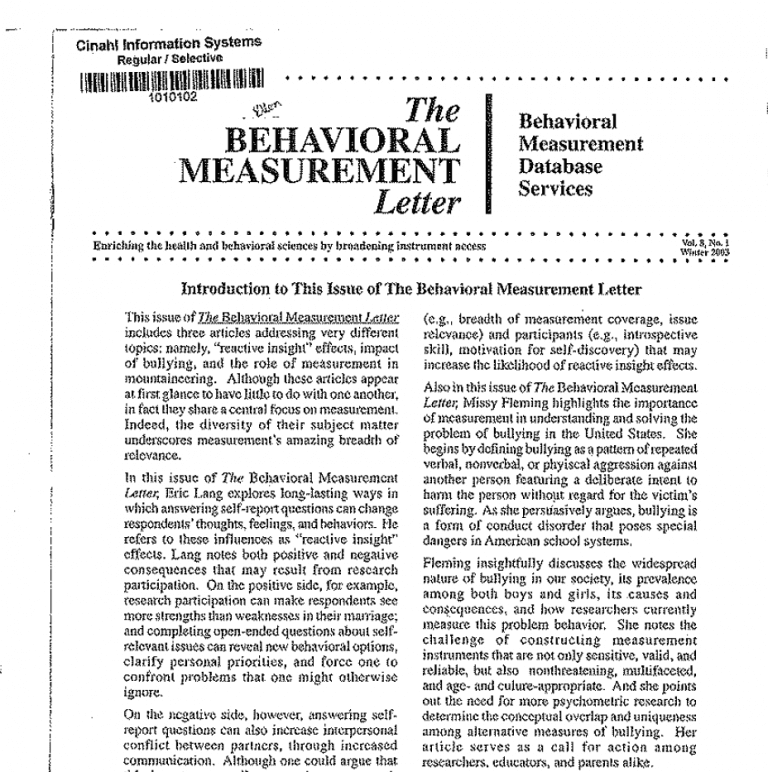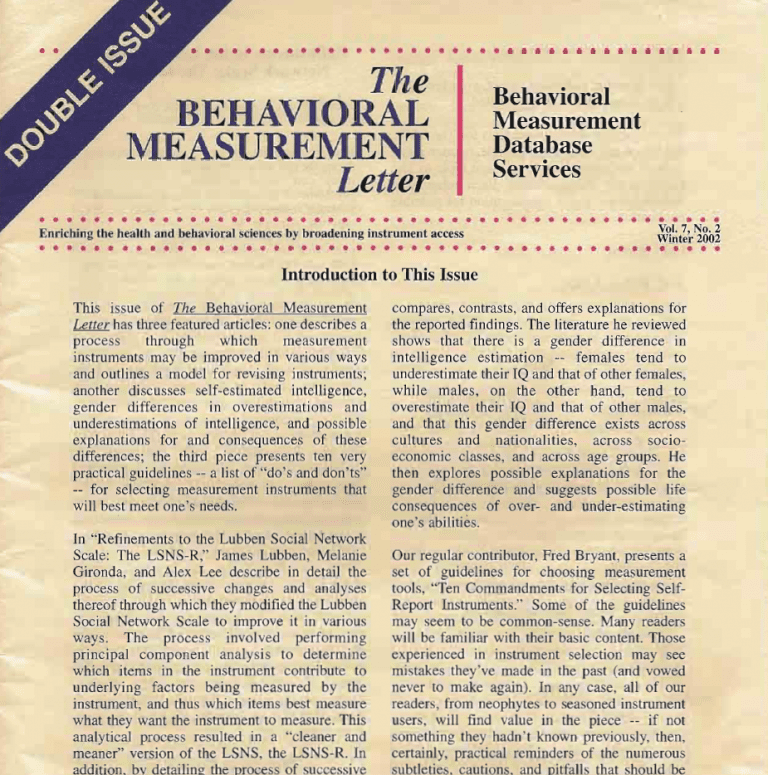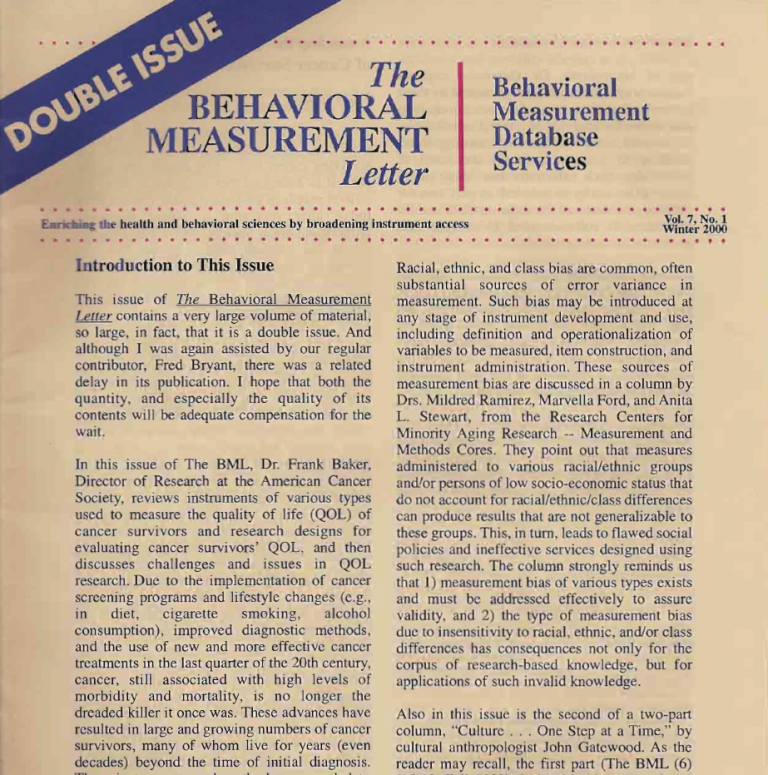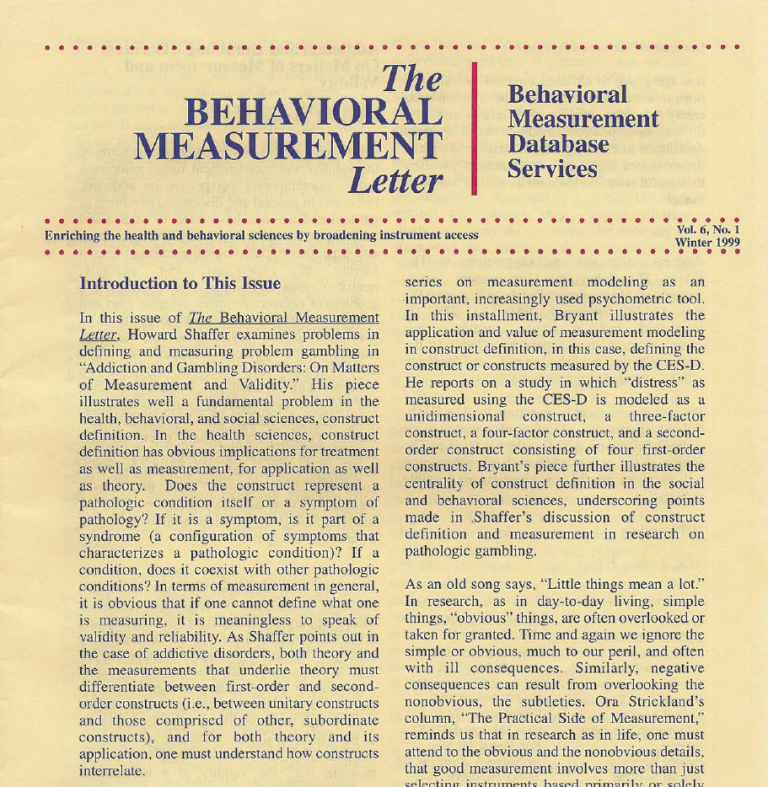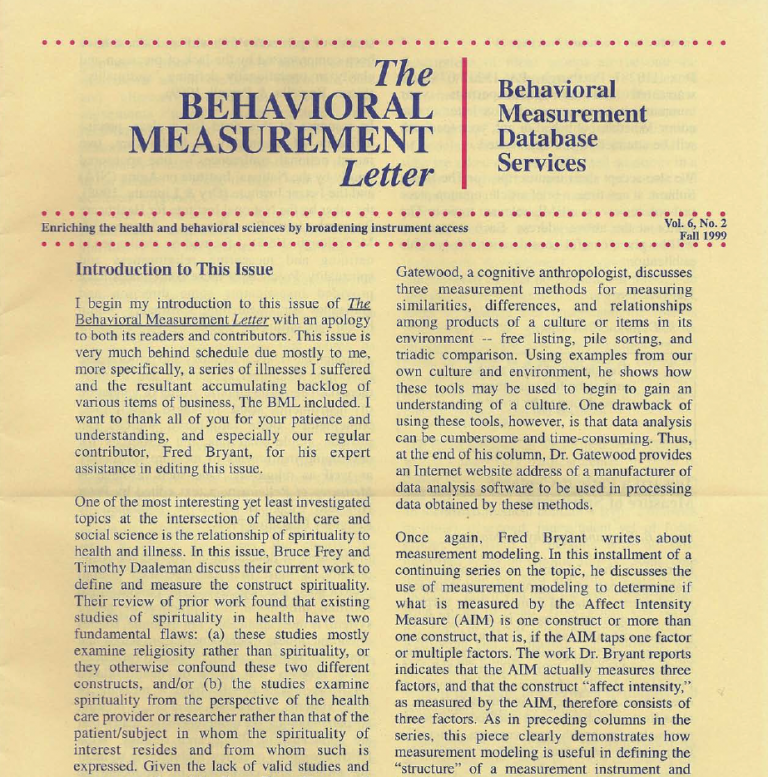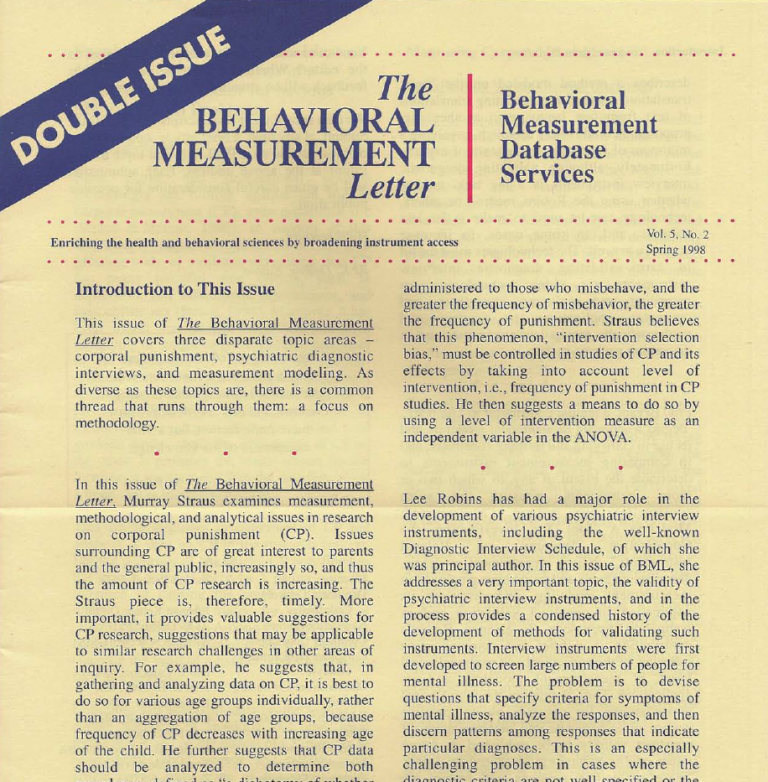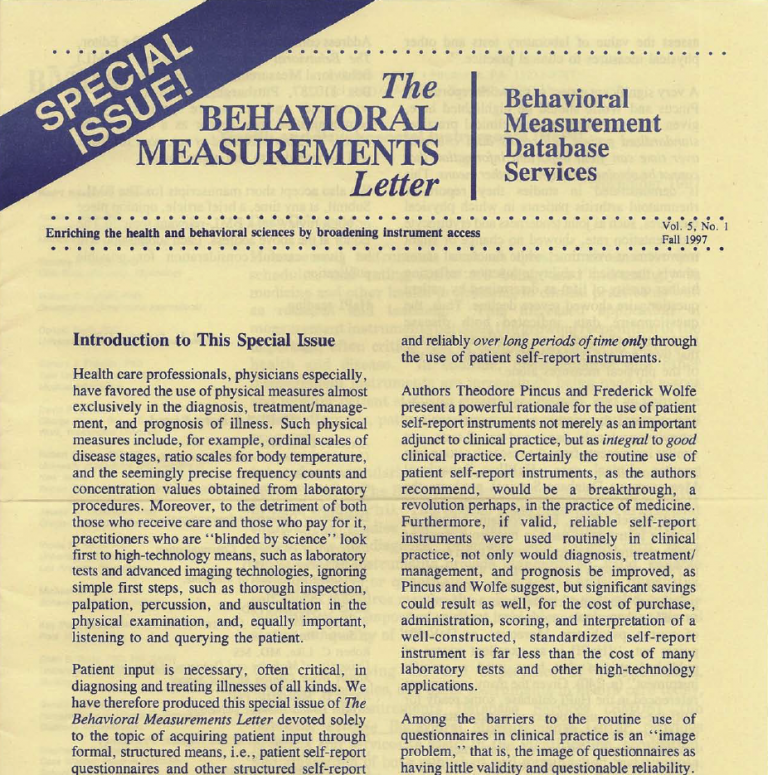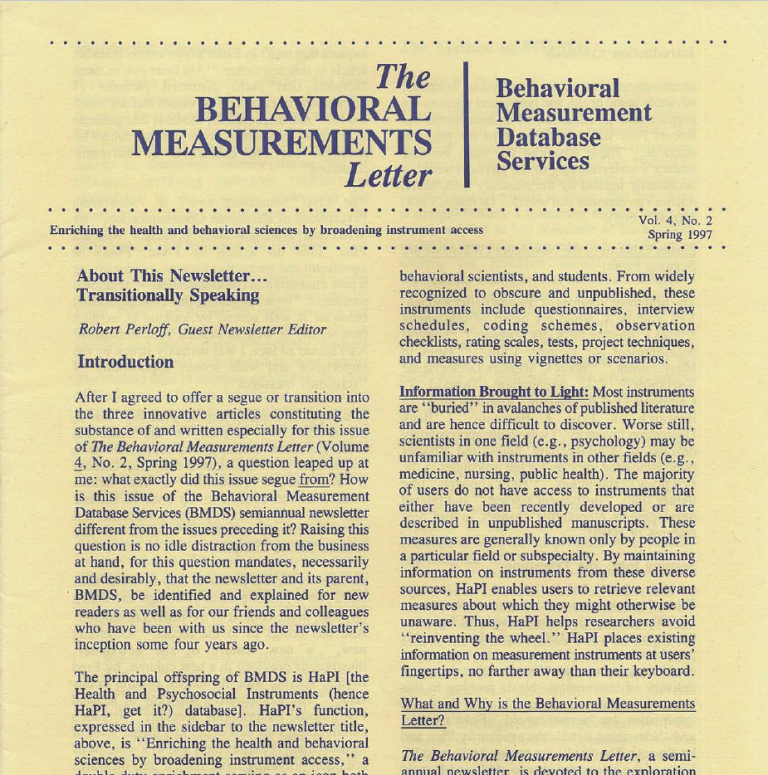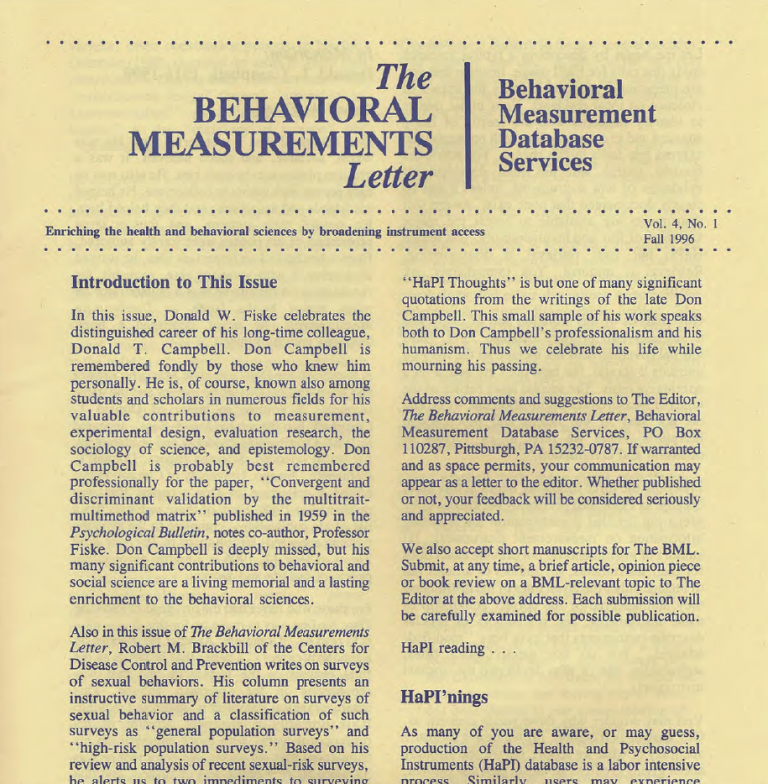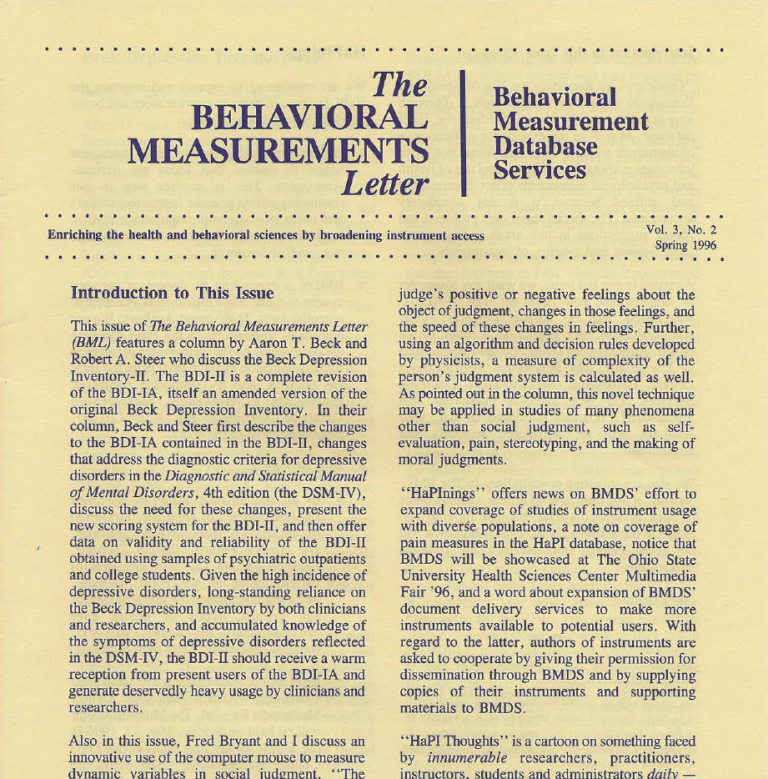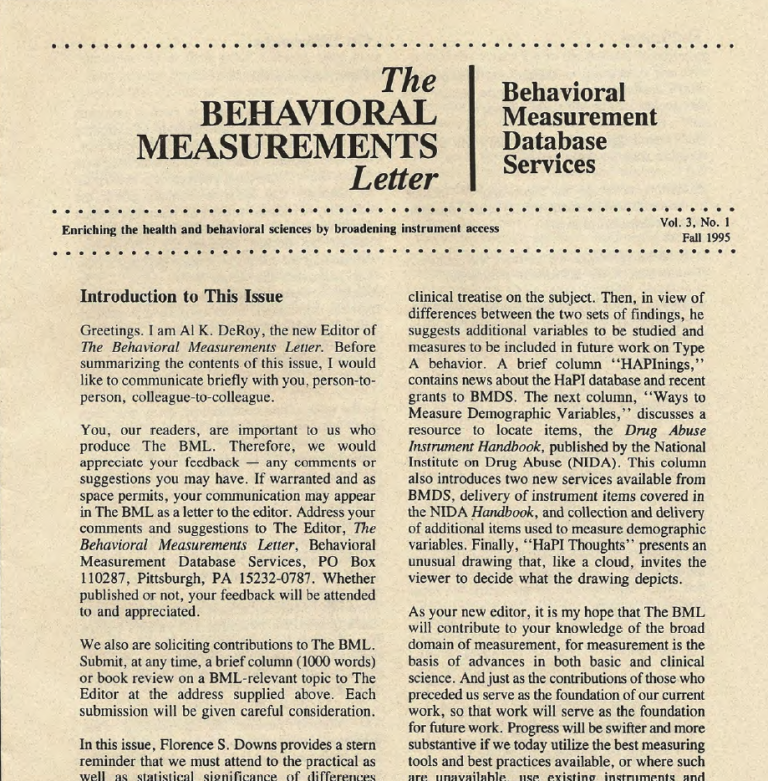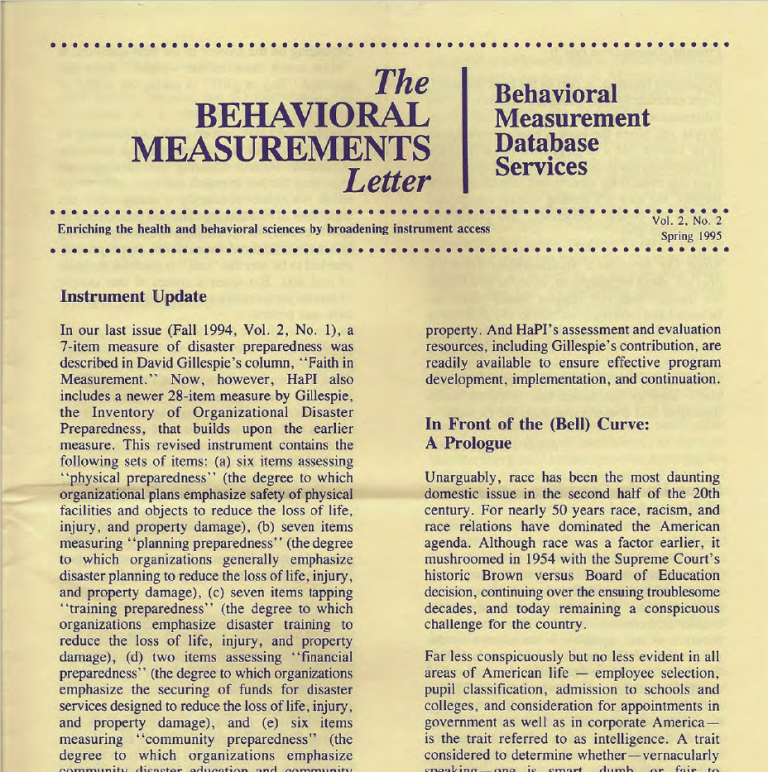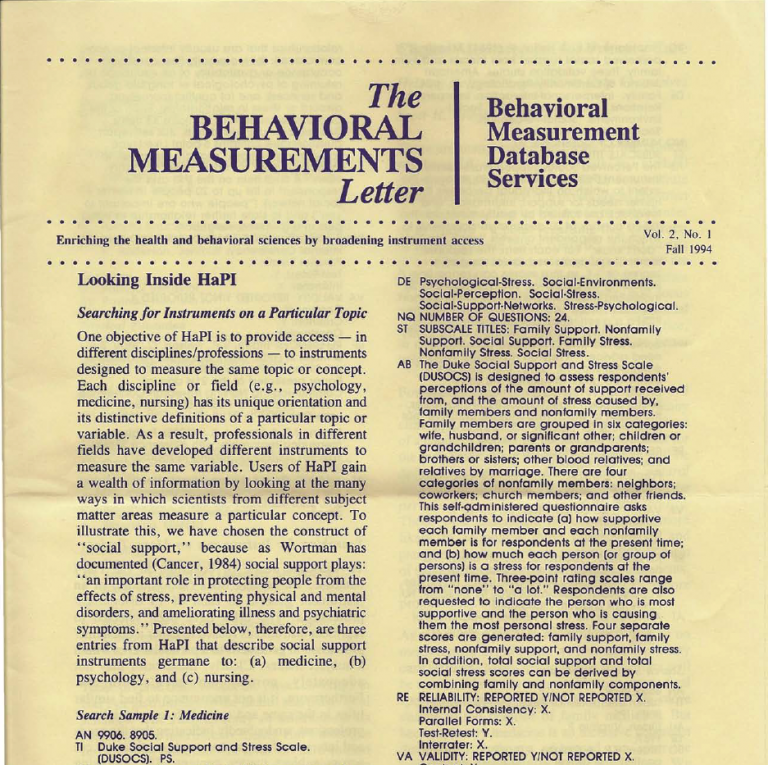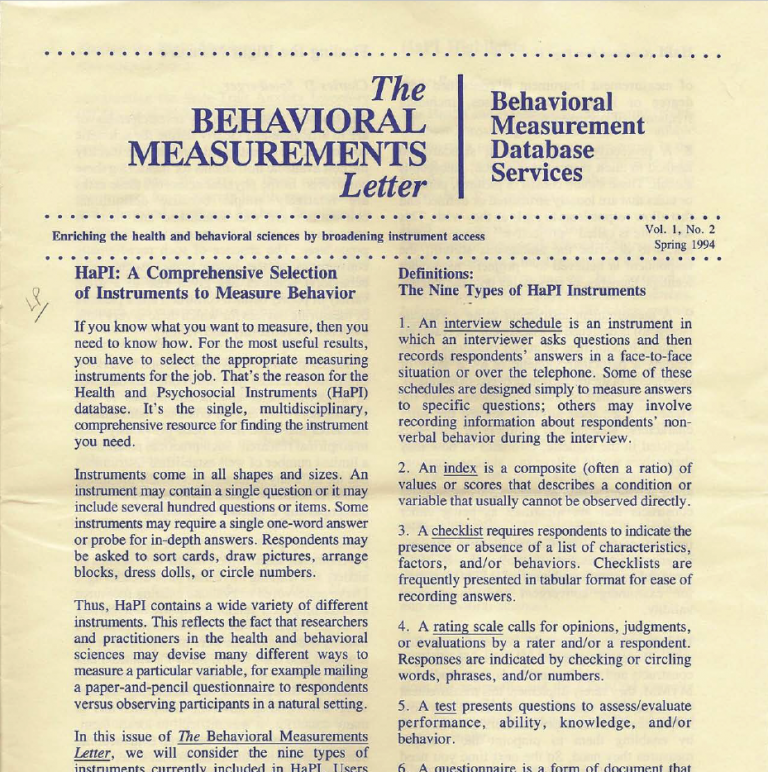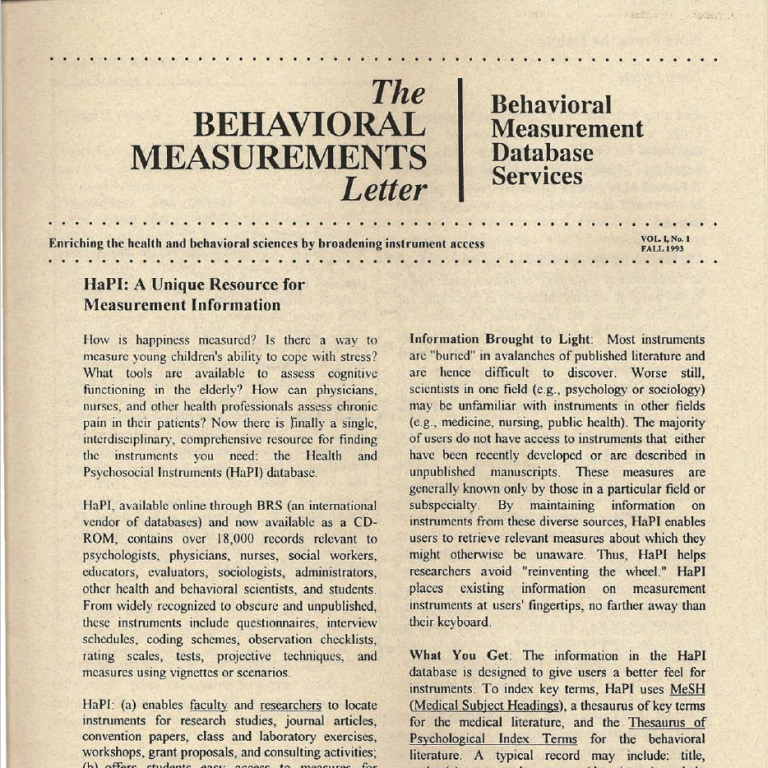Vol. 2, No. 2: Spring 1995
Instrument Update
In our last issue (Fall 1994, Vol. 2, No. 1), a 7-item measure of disaster preparedness was described in David Gillespie’s column, “Faith in Measurement.” Now, however, HaPI also includes a newer 28-item measure by Gillespie, the Inventory of Organizational Disaster Preparedness that builds upon the earlier measure. This revised instrument contains the following sets of items: (a) six items assessing “physical preparedness” (the degree to which organizational plans emphasize safety of physical facilities and objects to reduce the loss of life, injury, and property damage), (b) seven items measuring ”planning preparedness” (the degree to which organizations generally emphasize disaster planning to reduce the loss of life, injury, and property damage), (c) seven items tapping “training preparedness” (the degree to which organizations emphasize disaster training to reduce the loss of life, injury, and property damage), (d) two items assessing “financial preparedness” (the degree to which organizations emphasize the securing of funds for disaster services designed to reduce the loss of life, injury, and property damage), and (e) six items measuring “community preparedness” (the degree to which organizations emphasize community disaster education and community involvement to reduce the loss of life, injury, and property damage).
Fortunately, disasters are not daily events, but when they do occur as in recent earthquakes and floods, they can be devastating. David Gillespie’s efforts to measure disaster preparedness can contribute significantly to saving lives and property. And HaPI’s assessment and evaluation resources, including Gillespie’s contribution, are readily available to ensure effective program development, implementation, and continuation.
In Front of the (Bell) Curve: A Prologue
Unarguably, race has been the most daunting domestic issue in the second half of the 20th century. For nearly 50 years race, racism, and race relations have dominated the American agenda. Although race was a factor earlier, it mushroomed in 1954 with the Supreme Court’s historic Brown versus Board of Education decision, continuing over the ensuing troublesome decades, and today remaining a conspicuous challenge for the country.
Far less conspicuously but no less evident in all areas of American life – employee selection, pupil classification, admission to schools and colleges, and consideration for appointments in government as well as in corporate America is the trait referred to as intelligence. A trait considered to determine whether- vernacularly speaking-one is smart, dumb, or fair to middling. The labeling of one as bright, mentally agile, or dull, has gotten to be a descriptor of human variability that most of us consider to be pretty darned important, deservedly or otherwise.
And so, when the book, The Bell Curve, by Richard Herrnstein and Charles Murray (1994), was published a few months ago, it provoked thunderous reaction. A part of the book included, if not necessarily with accepted authenticity, the inflammatory ingredients of race and intelligence. Worse yet, when the book’s implications began to be known that a large portion of intelligence is genetically transmitted, you can imagine what a stir this created for months and months in public forums, the nation’s leading media, intellectual debates on college campuses, and practically everywhere else.
Since The Behavioral Measurements Letter, is after all, about measurement, as is The Bell Curve, we thought that our readers would savor the balanced and informed reaction to The Bell Curve which follows, “Sizing Up the Capacities of Humankind,” by Brown University professor Lewis P. Lipsitt, a leading developmental psychologist. We hope you enjoy it and that you share with us the belief that it offers much digestible and constructive food for thought.
Linda Perloff, Editor
Sizing Up the Capacities of Humankind
Lewis P. Lipsitt
The measurement of learning or any aspect of human ability, especially when ethnic or racial differences are documented, seems always to arouse acrimonious debate. The most recent iteration of this squabble is occasioned by the publication of Herrnstein and Murray’s (1994) The Bell Curve (Free Press). However, most of us who have children or who have taught children and have found their test scores wanting, especially when a critical decision will likely depend on the scores (as in college admission), know the “gut reaction”- something’s wrong with the test, it’s not fair.
It is interesting that the public freely accepts systematic measures for most things, from the gallon delivered to our car tank to the number of eggs sold for a given amount of money, itself a measure. And we quantify human characteristics, as well, all the time. The second most frequent question people ask on hearing of a baby’s birth, depending on the answer to the first question, is “How much does he/she weigh?” Even the question “Boy or girl?” is asking for a kind of measure.
People do not buy property without knowing its dimensions. Nor do we walk away from the paymaster without counting our earnings and expecting the pay to match our time, effort, and talent. We are constantly “sizing up” the capacities of humankind. Human proficiency in sports events, in car-racing, and in typewriting is always measured in numbers, appropriately checked to be sure the ”call” is made on the basis of real data. But when it comes to that sample of human performance called intelligence, people balk and protest.
Why?
First, we’re afraid the tests don’t really measure what they purport to measure. We don’t want to buy what we think is a quart in what turns out to be a half-quart container, and we don’t want to draw 87 octane gasoline from a gas pump marked 89.
We are wary, secondly, that the measurement taken, even if accurate, may not be a correct ”reflection” of an important aspect of our being. After all, there are different ways of being smart. Psychologists, Howard Gardner and Robert Sternberg, are our cutting-edge scholars in this regard.
Thirdly, people are afraid that the characterization of their “smarts” in terms of an IQ. confers a certain static condition on them. We do prefer the prospect of change, particularly for the better, but people tend to believe, at critical moments of measurement, that low and high are forever, despite the prevalence among us of ”developmental surprises”: friends and relatives who started out well but fell into harm’s way, or people who were predicted to come to no good end and worked out just fine. We owe the convincing documentation of the latter: sort to Emmy Werner, author of The Children of Kauai and, for the former, news accounts virtually every day of respected citizens, like mayors or CEOs, who turn out to have been defrauding the city treasury or their professional association for the past 5 years.
And finally, because the IQ historically was conceived as a ratio of mental age over chronological age and thus in principle remains constant as the child matures, we somehow conceive of IQ scores as hereditarily given when in fact they are measures heavily dependent upon acquired knowledge and skills. Many studies have shown marked IQ shifts over time in some youngsters. J. McV. Hunt collated the evidence in his book, Intelligence and Experience.
Whither group differences?
The Bell Curve has opened an old wound, by restating that in the U.S. (not an insignificant qualifier), African-Americans score group-wise an average of 15 IQ points lower than Whites. This is what the authors report and numerous large-scale studies have shown, and this is where the fighting begins-the same fight that we have with ourselves when our kids come in with a score that is less than optimal for taking up a course of study or entering an occupation of choice. Quarrels ensue over the composition of the tests, and about their predictive validity for different types of life tasks.
Two of the most telling arguments against taking the resurgence of interest in racial disparities seriously are:
(1) Group differences are always about groups, not individuals. Any given individual, White or African-American, may be at the top or bottom of the distribution associated with his or her identity, or anywhere in between.
(2) It is impossible to apply the concept of variance to an individual. Variance is a group statistic. Even if in a particular context of child rearing and ability-measurement, a finding is made permitting the statement “60% of the variance is due to heredity, and 40% to the environment,” there is no way in which it can be assumed for any given individual that his or her intelligence, for example, is 60% gene determined and 40% by experience.
(3) There can be questions raised about the very construct of race. Who is African-American and who is White? We live in a culture where having one great-grandparent who is African-American can designate the person as African-American. Where in our history did this definition of ” race by contamination” get its foothold.
(4) Poverty is the most powerful predictor of poor IQ performance in children. In the U.S., where 20% of our children live below the poverty level with all of the attendant handicaps of education, growth, and development that this condition confers, about 50% of African-American children reportedly live below the poverty level. Indeed, study after study has shown that the most salient correlate of IQ scores is socio-economic level. Why is this fact so frequently muted during discussions of race differences?
What to do?
We need more discussion about the processes by which increases in mental age and intellectual or cognitive function occur, and how best to measure these processes. Moreover, we need some reconceptualizations of intelligence, of the type that Sternberg and Gardner provide, honoring the full range of human capacities and areas of expertise. The measurement of IQ is here to stay in one form or another, but the tests must be allowed to evolve to accommodate changing conceptions of intellect and talent. Skilled basketball players probably have better space perception on the basketball court, and are surely more talented in practical aspects of ricochet physics than most physicists, but there is little in the current tests that taps this type of intelligent behavior.
All behavior is collaboratively generated by genes and the environment. The relative power or importance of heredity and experience, measured among groups, can be pushed around by alterations in either. That said, it is important to understand that genetic determination is, in a sense, all over at birth – actually at conception. For any given individual once born, the only sources of variation through which intelligence, however defined, and other developmental outcomes of that person can be altered are environmental or experiential. Thus the statistical findings of race and socio-economic differences in IQ should impel us to look toward optimizing the social conditions of education, child-rearing, and intelligence-making.
Bottom line
Lost in the talk about numerous studies showing persistent race-differences is the fact that many African-Americans have higher IQs than many Whites. One cannot know what the intellectual properties are of any given individual, White or African-American, Jewish or Christian, Japanese or Chinese, without having intelligent interaction with that person. College professors frequently encounter African-Americans with IQs of 115 and higher. The bell curve and the existing data on IQ indicate that such an African-American student has an IQ higher than at least about 83% of the whites in the nation. Many commentators on the Herrnstein and Murray book emphasize group differences rather than honor the vast individual differences, in all peoples, underlying the bell curve.
All individuals have a potential for intellectual development that cannot be ascertained independently of educational input. One defines a river in terms of its flow as much as by the presence of water. Its flow is altered by the rain, and by the slope and borders of the river bed. So does the developmental course of intelligence become sculpted by the context in which it is nurtured. Although species limitations do exist, we do not know in advance how high a given dog can jump until we give it our best shot in training. So also we cannot possibly know, for any given human infant, free of significant birth injury or defect, what that child’s cognitive or intellectual limits are.
Dr. Lewis P. Lipsitt is Professor of Psychology and Medical Science at Brown University, where he has been on the faculty since 1957 and directed the Child Study Center for 25 years. He has been a Guggenheim Fellow, and was a Fellow at the Center for Advanced Study in the Behavioral Sciences, at Stanford University. Dr. Lipsitt edits the Brown University ”Child and Adolescent Behavior Letter.”
May I never use my reason against truth.
– Hasidic prayer
Read additional articles from this newsletter:
Measuring a Simple Skill, Not So Simple!
2-2-spring-1995

